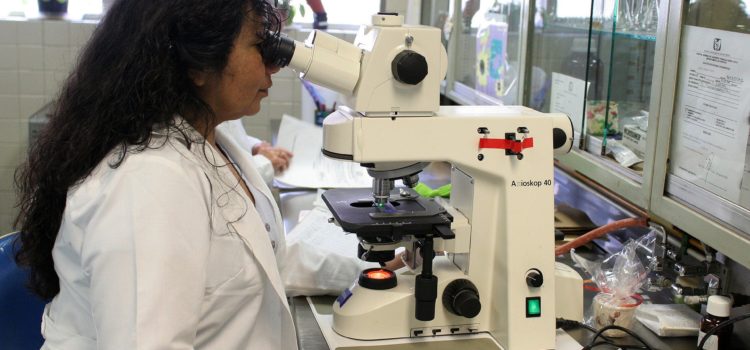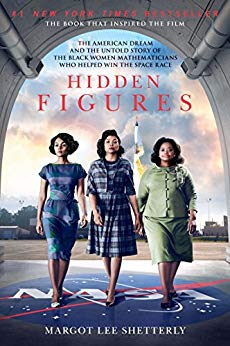

This article is an excerpt from the Shortform summary of "Hidden Figures" by Margot Lee Shetterly. Shortform has the world's best summaries of books you should be reading.
Like this article? Sign up for a free trial here .
What is gender discrimination in the workplace? What kind of gender discrimination did the women of Hidden Figures face, and what did they do to fight against it?
The book Hidden Figures focuses on the lives and careers of three black women who worked at NASA during the Jim Crow era. The women fought to overcome both racial and gender discrimination in the workplace, and their fight for equality created a legacy for women everywhere.
Built By Men, For Men
As women began advancing through the ranks at Langley in the postwar years, they saw that their sex was still a barrier to advancement in a field that was built and run by men. There was a whole universe of networking, consisting of lunches, cocktail hours, and men-only smoking sessions from which the women were excluded. Moreover, the decentralized nature of their work also disadvantaged the female computers. Because they were only given small portions of larger assignments to work on, it was difficult for the women to develop a holistic understanding of the kind of work the male engineers were doing. The environment was built to support gender discrimination in the workplace, and was similar to discrimination in the workforce women faces all across different industries.
The way to get noticed and start getting real credit for one’s work as a computer was to get out of the general computing pool and become assigned to a specific group working on a particular project. This would allow for the development of specialized knowledge, which would make the computer far more valuable to the team than someone with just general knowledge.
Barriers to Advancement
For all of the progress that had been made, Langley was still very much a white world, in particular a white man’s world. The women of West Computing may have mastered the intricacies of aerodynamics, but now they faced an even more daunting task: advancing as women in a career that was built and run by men. The discrimination against women in the workplace was everywhere.
The forms of gender discrimination in the workplace could be subtle. There was a whole universe of networking, consisting of lunches, cocktail hours, and men-only smoking sessions from which the women of Langley were shut out. Being talented wasn’t enough when they lacked the social capital and access to get their superiors to see it. Discrimination in the workforce meant that they weren’t given the chance to even show their full potential.
The decentralized nature of their work was also a disadvantage to the female computers. Because they were only given small portions of larger assignments to work on, it was difficult for Dorothy and her peers to develop a holistic understanding of the kind of work the male engineers were doing. Without this context, their work was just a series of isolated math equations and without specialized knowledge, they would become expendable when electronic computers began entering the laboratory, similar to how many jobs were considered expendable immediately following the war. The discrimination against women in the workplace meant that their jobs always felt like they could be taken away.
The way to get noticed and start getting real credit for one’s work as a computer was to get out of the general computing pool and become assigned to a specific group working on a particular project. This would allow for the development of specialized knowledge, which would make the computer far more valuable to the team than someone with just general knowledge. As NACA moved into space research in the 1950s and 1960s, this kind of specialization would be a key point of difference between the women who made the cut and those that didn’t, and would be key to pushing back against gender discrimination in the workplace.
The opportunity was made clear when, despite the discrimination against women in the workplace, two (white) female computers from East Computing. In 1947, these two women were sent west to the Mojave Desert, along with a small team of fellow Langley employees, to conduct research into the vexing problem of getting aircraft to travel faster than the speed of sound (“breaking the sound barrier”).
Working in this small, detached team and focusing on a singular, mission-oriented project was a game-changer for these two women. When they verified the fact that pilot Chuck Yeager had indeed broken the sound barrier, it brought them a new level of credit and recognition. They had broken a barrier of their own. Other signs of progress were there, as more and more Langley women began to get their names on research reports, a key first step in the career of any engineer.
Of course, the women of West Computing faced a double barrier to their upward mobility, being both female and black, an especially difficult obstacle when it comes to discrimination. in the workplace. Segregation had isolated them from their colleagues and from many opportunities. The all-white East Computing unit was shuttered after the war—many of the white women had won new positions in specialized units, plus the changing nature of the work at Langley reduced the need for a general computing pool. All remaining general computing work was transferred to West Computing, many Langley employees hadn’t even known that there was an all-black computing unit.
But the integration of the computing functions at Langley was a watershed moment at the laboratory and opened new doors to the black women who worked there. In 1946, a unit conducting stability analysis research integrated a former West Computer, Dorothy Hoover, into its group full-time. In 1951, Dorothy Hoover would co-publish a report on a new wing-design for airplanes, contributing to one of Langely’s major breakthroughs from this era. She eventually went on to a prestigious academic career in mathematics at Arkansas AM&N. Her achievement was followed by others, as more West Computers moved to specialized divisions, proving themselves despite discrimination in the workplace.
Katherine Johnson Forges Ahead
Katherine was helping senior researchers prepare reports that were presented and discussed at meetings, but she wasn’t allowed to attend the meetings themselves. This interfered with her work, and blocked her from making important contributions. She took the opportunity to pepper the engineers with questions, both to satisfy her own bottomless curiosity and to demonstrate her intellectual bona fides to the team. But because the topic was so unknown, she was discovering the answers right alongside the engineers. Despite her desire to contribute more to the mission by participating in the editorial meetings, however, she was still excluded from them, being told bluntly by her male colleagues, “Girls don’t go to the meetings.”
Her insistence on being included in the process was notable in an era when, even in the workplace, women were expected to “act like ladies” and patiently wait for assignments to be given to them by their male supervisors. This was due to gender discrimination in the workplace. That women might have the same passion for the work as their male colleagues seemed to have crossed no one’s mind. But Katherine was undaunted. For her, it would have been a betrayal of her own confidence and that of the people who had helped her get this far to turn her back on the greatest journey of exploration in human history, simply because she was a woman.
So she persisted. She kept asking to come to the meetings, always showing the utmost respect for her colleagues (which was genuine), but also the confidence that came from knowing that she truly belonged in the room. Her persistence paid off. The engineers couldn’t come up with a rational explanation for why someone so obviously committed to the cause and qualified to take on the challenge shouldn’t be allowed to contribute. It was a win for those who sought to end discrimination in the workforce. In 1958, Katherine entered the editorial meetings of the Aerospace Mechanics Division of NASA.
Gender discrimination in the workplace is still an ongoing issue, particularly when women are facing both gender and racial discrimination. By recognizing where it occurs, you can help advocate for yourself or others like the women of Hidden Figures.

———End of Preview———
Like what you just read? Read the rest of the world's best summary of Margot Lee Shetterly's "Hidden Figures" at Shortform .
Here's what you'll find in our full Hidden Figures summary :
- How brave black women were instrumental to the American space race
- How they confronted racism and sexism to forge a better future
- Their enduring legacy in American history






